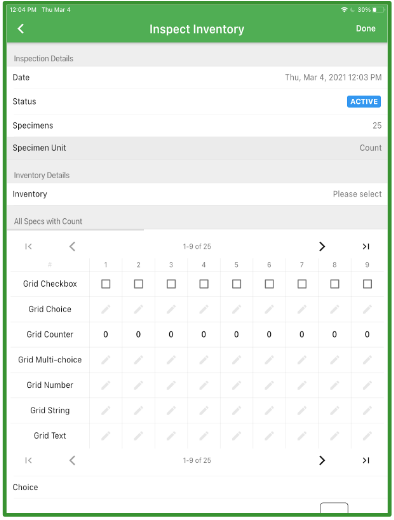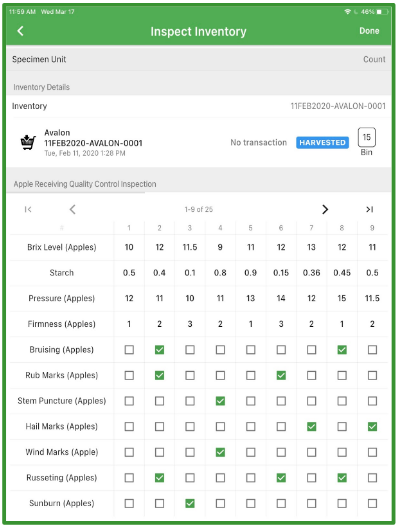Leading a third, fourth, fifth generation family farm? There’s a lot to be proud of when carrying on the family business: decades of growing knowledge, with the tried and true practices passed along from earlier generations, can warm the heart with tradition and spell success for harvest season. But there may be some old routines worth letting go of – say, like manual data entry from clipboards – in favor of more robust digital tracking solutions like Croptracker’s Quality Control (QC) module.
Contemporary compliance regulations and high demand for aesthetic consistency from the consumer market has led to a much longer paper trail than the past required. The latest product to join the farm management ERP, Croptracker’s QC module offers the flexibility to capture quality information in whatever format best suits the commodity. Keeping things in the family shouldn’t have to mean shying away from new, straightforward tools that can save the headache from redundant data management.

An example farm gets started with the QC module
Hypothetically speaking, say there’s a farm called Apple City, and it grows several apple varieties. Apple City sends harvest loads to its own packhouse for QC, packing, and shipping. The operation has been relying on paper checklists and forms for its initial quality information gathering for decades. These checklists are used to capture brix, pressure, color, and more; and then they get passed along from the crew supervisor to a member of the packhouse admin team for entry into an Excel spreadsheet.
From here, the admin team can analyze the data (that is, make another document to document the document) to relay to Sales and Marketing for connecting with buyers according to their particular grade and quality needs. That’s a lot of back and forth that could be cut out from the mix, were the data entered directly into a digital QC tool.
Grade standards and market demand
Grade standards are formed by interrelated criteria defined by international and regional parameters, as well as internal brand specifications. Using apples as an example, U.S. Grade Standards No. 1 and No. 2 differ in the percentage allowance of defects per apple that might end up being removed as waste when utilizing. U.S. No. 1 permits five percent or less defect, and U.S. No. 2 permits twelve percent or less. These grades do not encompass size criteria – this specification is determined between the grower and the seller. Internal grading standards correlate to market demand. The apple industry’s top grades are associated with the most appealing and precise hue and size ranges, with lower grades allowing for greater variability due to being valued for processing. Some large retailers are very choosy about the size and color they want to sell, so precise sorting and documentation of fruit specs is paramount to getting the most value out of a harvest.
Apple City goes streamlined
After assessing the potential benefits of investing in some fresh digital tools, Apple City decides to start using Croptracker’s QC module. The team creates Inspection Templates that include the important spec types that were previously accounted for with paper and pen.

Inspection formatting is so flexible that it could encapsulate many scenarios that could fall under ‘quality control’, but for now Apple City is sticking to a more standard template for reviewing and testing apples. Brix, starch, pressure, firmness and a range of defects are included with the appropriate unit of measurement and capture format type. This data can now be logged by tablet on site. The admin team can view it and move forward with the insights, without waiting for a hard copy of the day’s tracking to appear on the desks for processing.

As Apple City rolls out Croptracker’s QC tracking module to its team, the owners observe that the change to tablets and digital input has not only improved shareability of QC data. It’s also functioning as a means to standardize QC training, since the templates encourage a replicable system practice. Feedback from packhouse employees has been positive, as the new workflow encourages further learning and space to share industry knowledge between team members. And, simply having everything stored digitally is much less of a headache when trying to move at a quick pace throughout the day.
Apple City deems this roll out promising and anticipates further integration with Croptracker.
Designed with fresh market producers and distributors in mind, every tool we create is based on direct industry feedback. Optimize your harvest season with Croptracker’s customizable solutions. Book a demo to learn more about how Croptracker’s range of farm management tools can help your operation.


